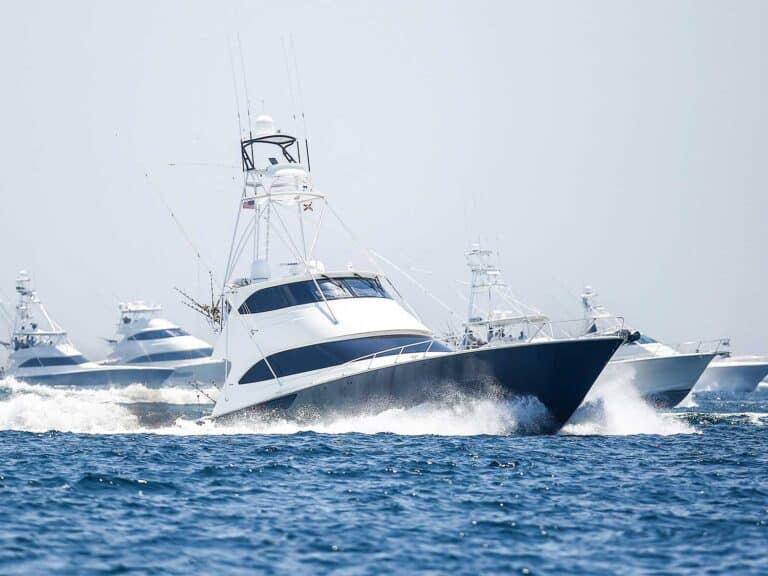
Sonar
In marine electronics, the “Big Four” (Furuno, Garmin, Raymarine and Simrad) offer CHIRP sonars, and they represent the most sophisticated sounding technology available to recreational and commercial fishermen. The name CHIRP comes from the phrase “compressed high-
intensity radar pulse.” That pulse is more easily understood as a long, powerful sound signal that ranges in frequency from a very low 28 kHz to a high 250 kHz. A CHIRP system separates a return echo’s frequencies to develop a very detailed, high-resolution image of targets only a few inches apart — in hundreds of feet of water.
Who wouldn’t want that? Well, it’s not cheap, but after two years in the marketplace, it has proven its worth to competitive tournament anglers. Here are a few facts that can help you understand the advantages that CHIRP systems provide over standard sonar.
More Than a Ping
The low-frequency sonar pulse — say 50 kHz -— typically used in conventional deepwater units has a longer transmit pulse. When a longer pulse is sent, they tend to overlap on nearby targets. When that happens in sonar, the system may blend one ping with the next, combining nearby targets into one.
A high-frequency pulse, such as a 200 kHz pulse used in shallower water, has a shorter duration pulse, so it’s more precise. A shorter pulse gives better discrimination. But the shorter “ping” is not as powerful, so its echo is often weakened before it returns to the transducer.
Instead of a single ping, CHIRP transmits a long pulse that slides from a low frequency to a higher frequency, like a bird chirp. That does two things. First, it puts more total energy on the target. Second, as the various frequencies return to the transducer, the sonar’s black box can separate individual frequencies bouncing back from the target. It combines them and uses that information to paint a highly detailed picture of sonar targets, even if they are only inches apart.
With CHIRP, bait balls are no longer blobs on the screen; they are individual baitfish. And the billfish slashing through the bottom of the school now show up as well instead of being blurred in with the baitball.
It’s All About “Q”
“Q” is the measure of a transducer’s power and sensitivity. “Q” pertains to the length of a pulse through the transducer. A high Q number means the unit is transmitting a long pulse. A low Q means a short pulse. Shorter is better. A long pulse may not quit ringing before the pulse returns from a second target. When that happens, the pulses blend together. Targets close together can be more easily distinguished with a low Q. On a Q scale of 1 to 35, 1 being the best, CHIRP transducers hit 2 or 3 — far better than standard sonar.
There are two components that make this magic possible. The first is higher powered microprocessors — the black boxes that interpret the data sent and received
by the transducers and display them on proprietary multifunction displays.
The second component is powerful transducers with the capacity to transmit long “chirps” of varying frequencies then detect even the slightest return signals for interpretation and display via Chirp equipped MFDs.
Most electronics makers tout their own CHIRP black boxes, but so far, Airmar transducers are the common link between them. The good ones are pricey — costing up to $4,000 each. Luckily, you won’t need more than one.
The transducers that competitive tournament billfishermen want are packed full of large and small ceramic elements that send and receive various frequency pings. The larger the ceramic, the more powerful the transmission and the more sensitive it is to even the faintest returning echo. By combining small and large ceramics, overall sensitivity is increased, and the chirps manage to ring down almost immediately, giving excellent high-definition returns at any depth.
Buying the most expensive, high-
resolution display and opting for a lower-end transducer with fewer ceramics is like connecting a 50-inch high-definition TV to standard cable.
Compatico
Rigging for CHIRP is pretty easy. Make sure your display is CHIRP-compatible and brand-matched. CHIRP systems don’t cross brand lines. Get the black box, and buy the best transducer available for it. There are a number of transducers for each brand that might do the job, but we suggest a narrowed list for tournament-ready, deepwater performance.







